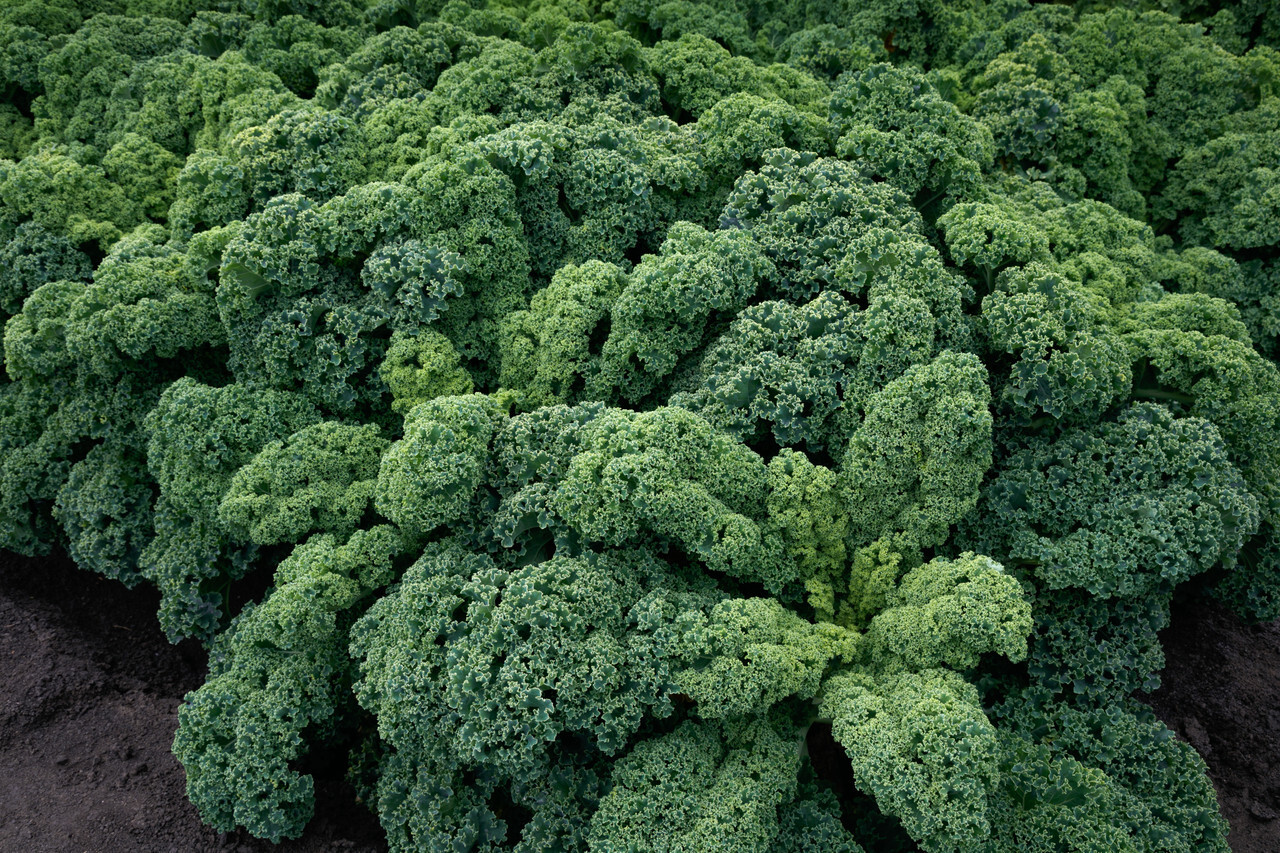There are no products listed under this category.

Kale is a hardy, cool-season green from the cabbage family that thrives in spring and fall, withstanding even light frosts. It is a versatile vegetable, often used in salads or as a garnish. Kale stands out for its impressive nutritional profile, being rich in minerals and vitamins A and C, and is considered one of the most nutrient-dense vegetables by fresh weight. Although cabbage is less notable for its protein, vitamin, and mineral content, both it and other leafy greens are widely cultivated. These greens are grown for fresh consumption and processed into various products
These crops thrive in monthly average temperatures of 60–65°F but struggle with temperatures consistently above 70°F. They are prone to bolting, which is the premature development of a flower or seed stem. Bolting typically occurs after prolonged exposure to low temperatures (below 50°F), followed by a period of warmer conditions. Such temperature extremes accelerate the rapid growth of the seed stem. Bolting-related losses are common, especially in overwintered crops subjected to severe temperature fluctuations.
Thrives in deep, fertile, well-drained loamy soil rich in organic matter, with a pH of 6.0–7.5. Maintaining consistent moisture levels ensures the highest quality leaves.
Kale can be planted anytime from early spring to early summer. For a fall harvest, plant it in late summer and continue harvesting until the ground freezes in winter. Thin the seedlings approximately two weeks after planting.
DIRECT SEEDING: Plant from early spring to about 3 months before the expected fall frost. For bunching, sow 3–4 seeds every 12–18 inches, ½ inch deep, with rows spaced 18–36 inches apart. Thin to one plant per group. For baby leaf production, sow 60 seeds per foot in a 2–4 inch band, ¼–½ inch deep.
EARLY SPRING CROP: Choose varieties suited for warm-season production. Sow 2 seeds per cell in 50- to 72-cell plug flats, 3–4 seeds per inch in 20-row flats, or in outdoor beds at a depth of ¼ inch. Seedlings will be ready for transplanting in 4–6 weeks. Maintain soil temperatures above 75°F until germination, then reduce air temperature to around 60°F. Transplant seedlings outdoors, spacing them 12–18 inches apart in rows 18–36 inches apart. While kale thrives in cooler temperatures between 55–75°F, with an optimum range of 60–70°F, it can still produce good yields in warmer summer conditions
FALL CROP: Start seedlings in May using the method described above, and transplant them to the garden in June or July. In regions with early heavy frosts, sow the crop early to ensure the plants mature before freezing temperatures arrive.
WINTER CROP: Kale can be successfully grown in regions with mild winters, where temperatures rarely drop below 32°F. In these areas, transplants can be planted from September through February.
12-24” in the row
18-36” between rows
Begin harvesting kale about two months after planting by clipping individual leaves. Kale is extremely hardy, and its flavor improves in late fall with light frosts. Many leafy greens, including kale, cabbage, collards, mustard, and turnip, are hand-harvested and packed directly in the field for the fresh market. While harvesting, trim away any yellowed, browned, or damaged leaves before bunching and placing them into containers.
Harvest tender kale leaves when they feel soft and avoid those with tough stems. Leaves are ready for picking when they are about the size of your hand. Harvest about a fistful of leaves at a time, ensuring you do not pick the terminal bud at the plant's center, as it keeps the plant productive. Kale will continue growing until temperatures drop to 20°F and develops a sweeter flavor after light frosts.
To extend your harvest, use row covers to shield kale from the cold. Small, tender leaves are perfect for salads and can be eaten raw, while larger leaves can be cooked like spinach—just remove the tough ribs before cooking. Store kale as you would other leafy greens by placing it in a plastic bag and refrigerating it. Properly stored, kale can last for about one week.
Looking to get started by growing your own kale from seed? Click on the button below to get started.
Shop nowThere are no products listed under this category.